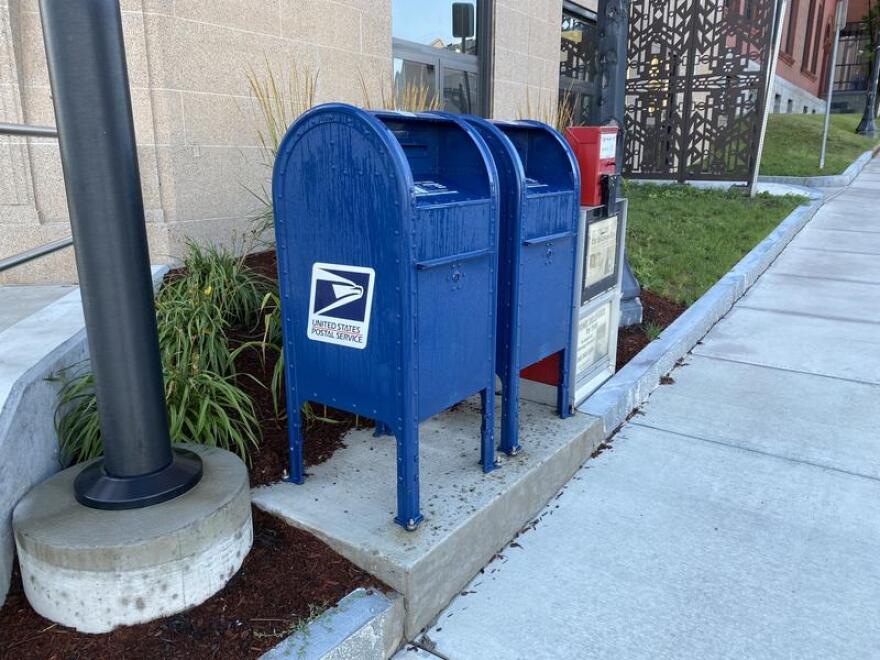ALBANY, NY (WAMC) - With Election Day less than three months away and no end to the coronavirus pandemic in sight, election officials in New York are scrambling to handle an expected spike in absentee ballots.
New York State Board of Elections Commissioner Peter Kosinski calls what the state accomplished in the June primary an “impossible task.” Not only were local boards conducting multiple elections on the same day, and dealing with the dramatics of an off-again-on-again Democratic primary — thanks to COVID-19, he says roughly 40 percent of this summer’s nearly2 million votes took place via mail-in, absentee ballot.
“The rules around the elections were constantly changing," said Kosinski in a recent State Senate hearing. "Local boards of elections had to contend with multiple executive orders. The qualifications for absentee ballots were changed, how voters could apply for an absentee ballot was changed, then all ballots were gonna be sent out, then absentee ballot applications were to be mailed to every eligible voter. Then they were to be in postage-paid envelopes.”
In the end, some races took weeks to call, and roughly 1 in 5 absentee ballots were thrown out, because they either missed the mail-in deadline or lacked a formal signature.
The results have drawn sharp criticism over the security and feasibility of mail-in voting — particularly from President Trump, who has claimed without evidence that mail-in voting is rife with fraud at the same time has moved to cut funding to the U.S. Postal Service.
Blair Horner, Executive Director of the New York Public Interest Research Group, says mail-in voting could very well be good for the state.
“I mean there are some states that conduct all of their elections by mail and they have for years. Those are some of the states (Oregon, for example) that have the highest voter turnout in the country — and it makes perfect sense," he explains. "It also means that there’s a paper trail for people's votes, so if somebody’s trying to hack into the system, it makes it a lot easier to validate the election if you have a paper ballot system...So the big problem will be, can the system handle the bigger turnout?”
New York, it would seem, isn’t built that way. Rather, Commissioner Kosinski says 95 percent of the state’s elections are designed to take place in person, on machines — and even then, poll lines in New York City have never been able to fully comply with the BOE’s 30-minute wait limit for presidential elections.
In a rush to find answers, lawmakers and election officials alike are proposing a number of changes, including: relying more on early voting, expanding the 7-day postmark for mail-in ballots, expanding the time frame for absentee ballot applications, implementing drop boxes, and changing the layout of ballots to better catch the eye, like a big, red “Sign Here” ‘X’ by the signature line.
Darlene Harris is the Republican Commissioner with the Schenectady County Board of Elections. She says she’s all for changing the layout of ballots, but simple voter education goes a long way.
“I would rely on news media, ourselves — you know, all boards of elections need to have all of the information available electronically on their websites and things like that, and if they use social media [they need to make sure] that they're pushing out the information to the voters as well," says Harris. "And then the voters have to take a little bit of responsibililty too — and if they want to take actions or have questions, then they're contacting their local board of elections to get the proper information. Don't rely on what your friends said."
Where election officials agree is that any measure, even basic “voter education,” costs money. Kosinski says the state BOE received $20 million from the federal government and $4 million from the state for June’s primaries — and spent a good majority of it.
Harris is optimistic that the canceled April primary (and some smart budgeting on the board’s part) will allow Schenectady County to bring in additional staff to handle absentee ballots in the fall, but that isn’t the case wherever you go. State BOE Co-Executive Director Robert Brehm argues that many local boards can’t afford to hire more poll workers or implement the other new measures without state funding.
"I'm asking for something specifically: we don't have the resources, but you do," said Brehm at the hearing.
Do they? Governor Andrew Cuomo warns New York faces a $30 billion shortfall over the next two years as a result of COVID-19, and with Congress deadlocked over the next phase of relief funding, help doesn’t appear to be on the way. NYPIRG’s Horner says that shouldn’t matter.
“While it is facing an incredible budget deficit — this is a constitutional right, and the state should be doing all it can to make sure that the rickety, flawed system that we have already works as best as it can. And a big chunk of that is gonna be resources devoted by the state.”
Governor Cuomo is expected to expand the qualifications for absentee ballots, allowing a COVID excuse. Election Day is November 3. Horner notes voters must apply for absentee ballots no earlier than 30 days from that date, and early voting is open from October 24 to November 1. Lastly? You can turn in absentee applications and ballots directly at your local board of elections office and cut out the mail altogether.

